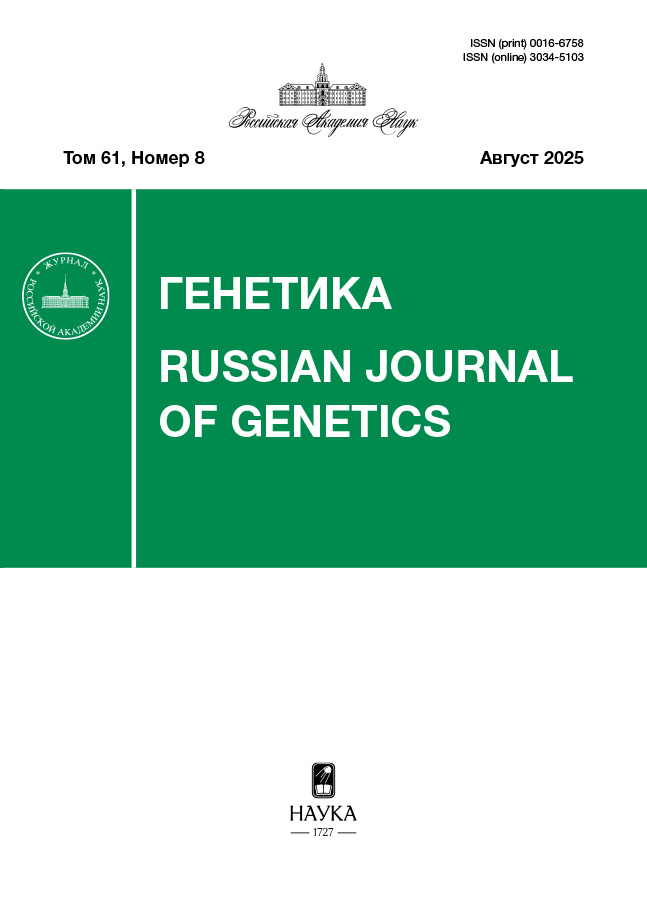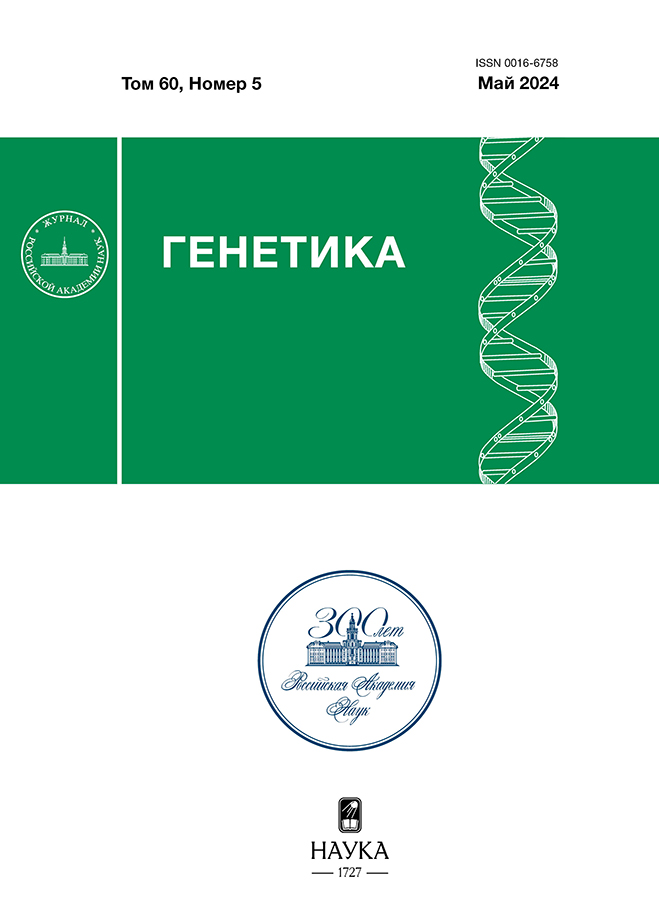CNV у пациентов с нарушениями психомоторного развития: метаанализ
- Авторы: Федотов Д.А.1, Кашеварова А.А.1, Лебедев И.Н.1
-
Учреждения:
- Томский национальный исследовательский медицинский центр Российской академии наук
- Выпуск: Том 60, № 5 (2024)
- Страницы: 26-41
- Раздел: ОБЗОРНЫЕ И ТЕОРЕТИЧЕСКИЕ СТАТЬИ
- URL: https://journals.eco-vector.com/0016-6758/article/view/667259
- DOI: https://doi.org/10.31857/S0016675824050026
- EDN: https://elibrary.ru/CJRONR
- ID: 667259
Цитировать
Полный текст
Аннотация
Обзор представляет собой комплексный анализ вариаций числа копий участков ДНК (CNV), обнаруженных у пациентов с нарушениями психомоторного развития (НПР) и опубликованных в мировой литературе, с применением специально разработанных критериев отбора. CNV охарактеризованы в отношении клинической значимости, типа изменения копийности (микроделеции/микродупликации), размера, происхождения и вовлеченных генов. Исследуемая выборка включала 3375 пациентов с НПР, среди которых патогенные и вероятно патогенные CNV, а также варианты с неопределенной клинической значимостью были обнаружены у 395 индивидов (12%). Хромосомные варианты из каждой категории выявлены у 89 (3%), 56 (2%) и 241 (7%) пациентов соответственно. Девять индивидов имели комбинации CNV разной клинической значимости. Количество микродупликаций незначительно преобладает над числом микроделеций (250 и 204 соответственно). Размер большей части CNV варьировал в диапазоне от 193 пар нуклеотидов до 400 кб и от 1 до 3 Мб (237 и 96 соответственно). 72 варианта возникли de novo, 165 были унаследованы. 87 CNV ассоциированы с 33 известными микроделеционными/микродупликационными синдромами. Наиболее часто встречались синдромы микродупликации 1q21.1 (7/395, 1.8%) (OMIM:612475), микроделеции 2p16.3 (9/395, 2.3%) (OMIM:614332), микроделеции 15q13.3 (7/395, 1.8%) (OMIM:612001), микроделеции 16p11.2 (9/395, 2.3%) (OMIM:611913) и микродупликации 22q11.2 (7/395, 1.8%) (OMIM:608363). В результате анализа обогащения было установлено, что патогенные CNV, как и варианты с неопределенной клинической значимостью, обогащены генами, ассоциированными с аномальным поведенческим/неврологическим фенотипом. Вероятно патогенные CNV включали гены, связанные с нарушениями нервной системы, а также гомеостаза/метаболизма.
Полный текст
Об авторах
Д. А. Федотов
Томский национальный исследовательский медицинский центр Российской академии наук
Автор, ответственный за переписку.
Email: dmitry.fedotov@medgenetics.ru
Россия, Томск
А. А. Кашеварова
Томский национальный исследовательский медицинский центр Российской академии наук
Email: dmitry.fedotov@medgenetics.ru
Россия, Томск
И. Н. Лебедев
Томский национальный исследовательский медицинский центр Российской академии наук
Email: dmitry.fedotov@medgenetics.ru
Россия, Томск
Список литературы
- International Classification of Diseases 11th Revision.The global standard for diagnostic health information. https://icd.who.int/. (Accessed 8 Sep 2023).
- Ilyas M., Mir A., Efthymiou S., Houlden H. The genetics of intellectual disability: Advancing technology and gene editing // F1000Res. 2020. V. 9. № 22. https://doi.org/10.12688/f1000research.16315.1
- Kearney H. M., Thorland E. C., Brown K. K. et al. American College of Medical Genetics standards and guidelines for interpretation and reporting of postnatal constitutional copy number variants // Genet. Med. 2011. V. 13. № 7. P. 680–685. https://doi.org/10.1097/GIM.0b013e3182217a3a
- Alkan C., Coe B.P., Eichler E.E. Genome structural variation discovery and genotyping // Nat. Rev. Genet. 2011. V. 12. № 5. P. 363–376. https://doi.org/10.1038/nrg2958
- Lupiáñez D.G., Kraft K., Heinrich V. et al. Disruptions of topological chromatin domains cause pathogenic rewiring of gene-enhancer interactions // Cell. 2015. V. 161. № 5. P. 1012–1025. https://doi.org/10.1016/j.cell.2015.04.004
- Girirajan S., Rosenfeld J.A., Cooper G.M. et al. A recurrent 16p12.1 microdeletion supports a two-hit model for severe developmental delay // Nat. Genet. 2010. V. 42. № 3. P. 203–209. https://doi.org/10.1038/ng.534
- Cooper D.N., Krawczak M., Polychronakos C. et al. Where genotype is not predictive of phenotype: Towards an understanding of the molecular basis of reduced penetrance in human inherited disease // Hum. Genet. 2013. V. 132. №10. P.1077–1130. https://doi.org/10.1007/s00439-013-1331-2
- Database of Genomic Variants (DGV). URL: https://dgv.tcag.ca/ (Accessed 8 Sep 2023).
- Mapping the clinical genome (DECIPHER). https://www.deciphergenomics.org/. (Accessed 8 Sep 2023.
- Online Mendelian Inheritance in Man (OMIM). https://omim.org/.
- Page M.J., McKenzie J.E., Bossuyt P.M. et al. The PRISMA 2020 statement: An updated guideline for reporting systematic reviews // BMJ. 2021. V. 372. № n71. https://doi.org/10.1136/bmj.n71
- National Library of Medicine, National Center for Bio-technology Information. https://pubmed.nc-bi.nlm.nih.gov/ (Accessed 8 Sep 2023).
- NCBI Genome Remapping Service (NCBI Remap). URL: https://www.ncbi.nlm.nih.gov/genome/tools/remap (Accessed 8 Sep 2023).
- Chehbani F., Tomaiuolo P., Picinelli C. et al. Yield of array-CGH analysis in Tunisian children with autism spectrum disorder // Mol. Genet. Genomic Med. 2022. V. 10. №. 8. https://doi.org/10.1002/mgg3.1939
- Baccarin M., Picinelli C., Tomaiuolo P. et al. Appropriateness of array-CGH in the ADHD clinics: A comparative study // Genes Brain Behav. 2020. V. 19. № 6. https://doi.org/10.1111/gbb.12651
- Zarrei M., Burton C.L., Engchuan W. et al. A large data resource of genomic copy number variation across neurodevelopmental disorders // NPJ Genom. Med. 2019. V. 4. № 26. https://doi.org/10.1038/s41525-019-0098-3
- Lindstrand A., Eisfeldt J., Pettersson M. et al. From cytogenetics to cytogenomics: Whole-genome sequencing as a first-line test comprehensively captures the diverse spectrum of disease-causing genetic variation underlying intellectual disability // Genome Med. 2019. V. 11. №. 68. https://doi.org/10.1186/s13073-019-0675-1
- Lopes F., Torres F., Soares G. et al. Genomic imbalances defining novel intellectual disability associated loci // Orphanet J. Rare Dis. 2019. V. 14. № 164. https://doi.org/10.1186/s13023-019-1135-0
- Firouzabadi S.G., Kariminejad R., Vameghi R. et al. Copy number variants in patients with autism and additional clinical features: Report of VIPR2 duplication and a novel microduplication syndrome // Mol. Neurobiol. 2017. V. 54. № 9. P. 7019–7027. https://doi.org/10.1007/s12035-016-0202-y
- Fry A.E., Rees E., Thompson R. et al. Pathogenic copy number variants and SCN1A mutations in patients with intellectual disability and childhood-onset epilepsy // BMC Med. Genet. 2016. V. 17. № 34. https://doi.org/10.1186/s12881-016-0294-2
- Wilfert A.B., Sulovari A., Turner T.N. et al. Recurrent de novo mutations in neurodevelopmental disorders: properties and clinical implications // Genome Med. 2017. V. 9. № 101. https://doi.org/10.1186/s13073-017-0498-x
- Munnich A., Demily C., Frugère L. et al. Impact of on-site clinical genetics consultations on diagnostic rate in children and young adults with autism spectrum disorder // Mol. Autism. 2019. V. 10. № 33. https://doi.org/10.1186/s13229-019-0284-2
- McGowan-Jordan J., Hastings R.J., Moore S. ISCN 2020: An International System for Human Cytogenomic Nomenclature (2020). Basel: Karger, 2020. https://doi.org/10.1159/isbn.978-3-318-06867-2
- Bonati M.T., Castronovo C., Sironi A. et al. 9q34.3 microduplications lead to neurodevelopmental disorders through EHMT1 overexpression // Neurogenetics. 2019. V. 20. № 3. P. 145–154. https://doi.org/10.1007/s10048-019-00581-6
- Bailey J.A., Yavor A.M., Massa H.F. et al. Segmental duplications: Organization and impact within the current human genome project assembly // Genome Res. 2001. V. 11. № 6. P. 1005–1017. https://doi.org/10.1101/gr.gr-1871r
- Redaelli S., Maitz S., Crosti F. et al. Refining the phenotype of recurrent rearrangements of chromosome 16 // Int. J. Mol. Sci. 2019. V. 20. № 5. https://doi.org/10.3390/ijms20051095
- Delbridge M.L., McMillan D.A., Doherty R.J. et al. Origin and evolution of candidate mental retardation genes on the human X chromosome (MRX) // BMC Genomics. 2008. V. 5. № 9. https://doi.org/10.1186/1471-2164-9-65
- Беляева Е.О. Клинико-генетическая характеристика пациентов с недифференцированными формами интеллектуальных расстройств и хромосомными микродупликациями: Дис… канд. мед. наук. М.: НИИ мед. генетики ТНИМЦ, 2019. 231 с.
- Girirajan S., Eichler E.E. Phenotypic variability and genetic susceptibility to genomic disorders // Hum. Mol. Genet. 2010. V. 19. № R2. P. R176–R187. https://doi.org/10.1093/hmg/ddq366
- Girirajan S., Rosenfeld J.A., Coe B.P. et al. Phenotypic heterogeneity of genomic disorders and rare copy-number variants // N. Engl. J. Med. 2012. V. 367. № 14. P. 1321–1331. https://doi.org/10.1056/NEJMoa1200395
- Kikas T., Punab A.M., Kasak L. et al. Microdeletions and microduplications linked to severe congenital disorders in infertile men // Sci. Rep. 2023. V. 13. № 574. P. 1–11. https://doi.org/10.1038/s41598-023-27750-w
- Mosley T.J., Johnston H.R., Cutler D.J. et al. Sex-specific recombination patterns predict parent of origin for recurrent genomic disorders // BMC Med. Genomics. 2021. V. 14. № 154. P. 1–12. https://doi.org/10.1186/s12920-021-00999-8
- Chowdhury R., Bois P.R., Feingold E. et al. Genetic analysis of variation in human meiotic recombination // PLoS Genet. 2009. V. 5. № 9. https://doi.org/10.1371/journal.pgen.1000648
- Potocki L., Chen K.S., Park S.S. et al. Molecular mechanism for duplication 17p11.2 – the homologous recombination reciprocal of the Smith-Magenis microdeletion // Nat. Genetics. 2000. V. 24. № 1. P. 84–87. https://doi.org/10.1038/71743
- Gajecka M., Mackay K.L., Shaffer L.G. Monosomy 1p36 deletion syndrome // Am. J. Med. Genet. Part C. Semin. Med. Genet. 2007. V. 145. №. 4. P. 346–356. https://doi.org/10.1002/ajmg.c.30154
- Delio M., Guo T., McDonald-McGinn D.M. et al. Enhanced maternal origin of the 22q11.2 deletion in velocardiofacial and DiGeorge syndromes // Am. J. Hum. Genet. 2013. V. 92 № 3. P. 439–447. https://doi.org/10.1016/j.ajhg.2013.01.018
- Duyzend M.H., Nuttle X., Coe B.P. et al. Maternal modifers and parent-of-origin bias of the autism-associated 16p11.2 CNV // Am. J. Hum. Genet. 2016. V. 98. № 1. P. 45–57. https://doi.org/10.1016/j.ajhg.2015.11.017
- Neuhausler L., Summerer A., Cooper D.N. et al. Pronounced maternal parent-of-origin bias for type-1 NF1 microdeletions // Hum. Genet. 2018. V. 137. № 5. P. 365–373. https://doi.org/10.1007/s00439-018-1888-x
- Wang B., Ji T., Zhou X. et al. CNV analysis in Chinese children of mental retardation highlights a sex differentiation in parental contribution to de novo and inherited mutational burdens // Sci. Rep. 2016. V. 6. № 25954. https://doi.org/10.1038/srep25954
- Redon R., Ishikawa S., Fitch K.R. et al. Global variation in copy number in the human genome // Nature. 2006. V. 444. № 7118. P. 444–454. https://doi.org/10.1038/nature05329
- Itsara A., Cooper G.M., Baker C. et al. Population analysis of large copy number variants and hotspots of human genetic disease // Am. J. Hum. Genet. 2009. V. 84. № 2. P. 148–161. https://doi.org/10.1016/j.ajhg.2008.12.014
- Cooper G.M., Coe B.P., Girirajan S. et al. A copy number variation morbidity map of developmental delay // Nat. Genetics. 2011. V. 43. № 9. P. 838–846. https://doi.org/10.1038/ng.909
- Xie Z., Bailey A., Kuleshov M. V. et al. Gene SetKnowledge Discovery with Enrichr // Curr. Protoc. 2021. V. 1. № 3. P. e90. https://doi.org/10.1002/cpz1.90
- Paz Levy D., Wainstock T., Sheiner E. et al. Maternal recurrent pregnancy loss is associated with an increased risk for long-term neurological morbidity in offspring // Dev. Med. Child Neurol. 2019. V. 61. № 1. P. 91–97. https://doi.org/10.1111/dmcn.13976
- Wang H., Li F., Miao M. et al. Maternal spontaneous abortion and the risk of attention-deficit/hyperactivity disorder in offspring: A population-based cohort study // Hum. Reprod. 2020. V. 35. № 5. P. 1211–1221. https://doi.org/10.1093/humrep/deaa035
- Ji H., Yu Y., Miao M. et al. Risk of intellectual disability and maternal history of spontaneous abortion: A nationwide cohort study // Dev. Med. Child Neurol. 2021. V. 63. № 7. P. 831–838. https://doi.org/10.1111/dmcn.14839
- Levy B., Wapner R. Prenatal diagnosis by chromosomal microarray analysis // Fertil. Steril. 2018. V. 109. № 2. P. 201–212. https://doi.org/10.1016/j.fertnstert.2018.01.005
- Finley J., Hay S., Oldzej J. et al. The genomic basis of sporadic and recurrent pregnancy loss: a comprehensive in-depth analysis of 24,900 miscarriages // Reprod. Biomed. Online. 2022. V. 45. № 1. P. 125–134. https://doi.org/10.1016/j.rbmo.2022.03.014
Дополнительные файлы

















